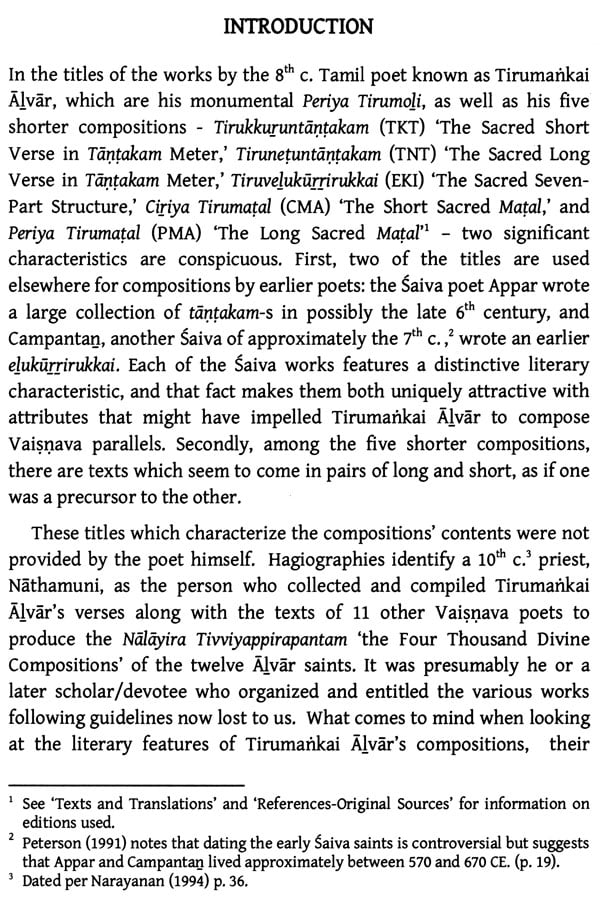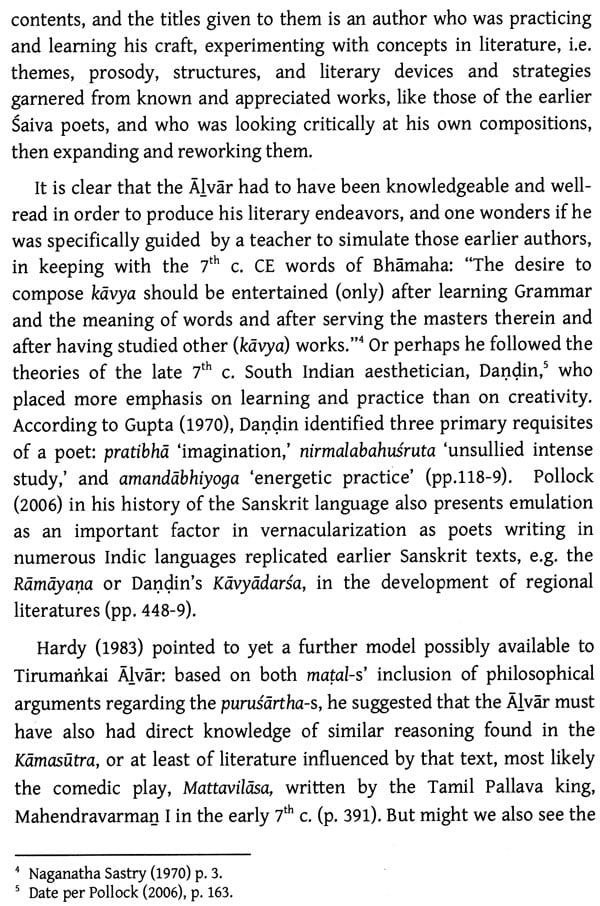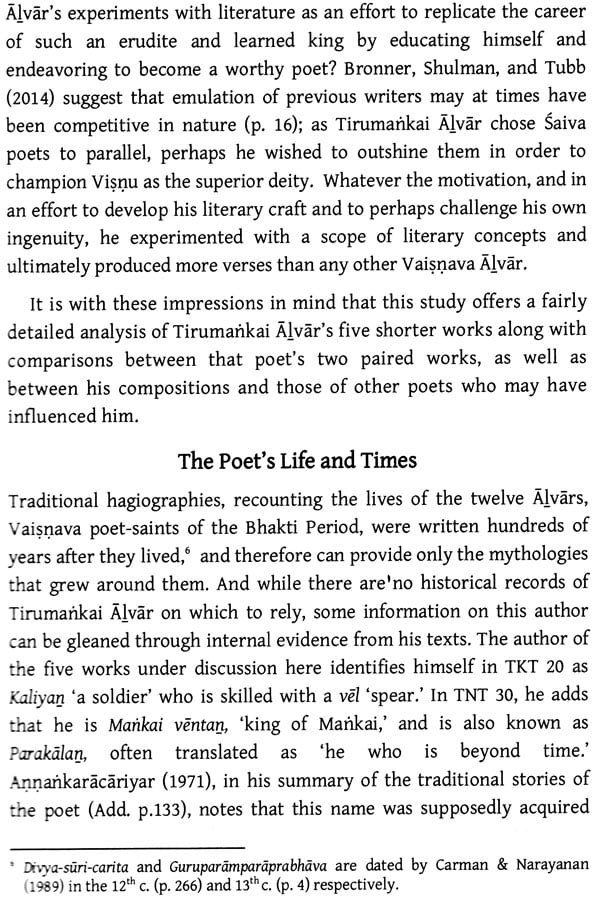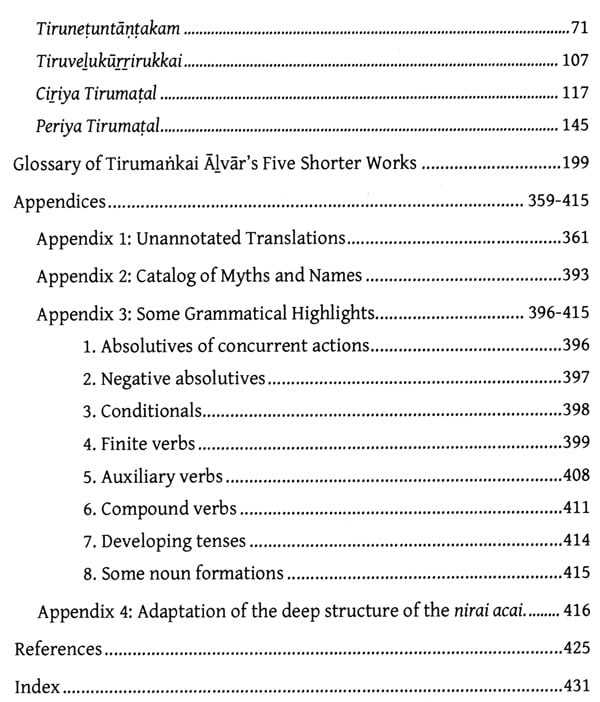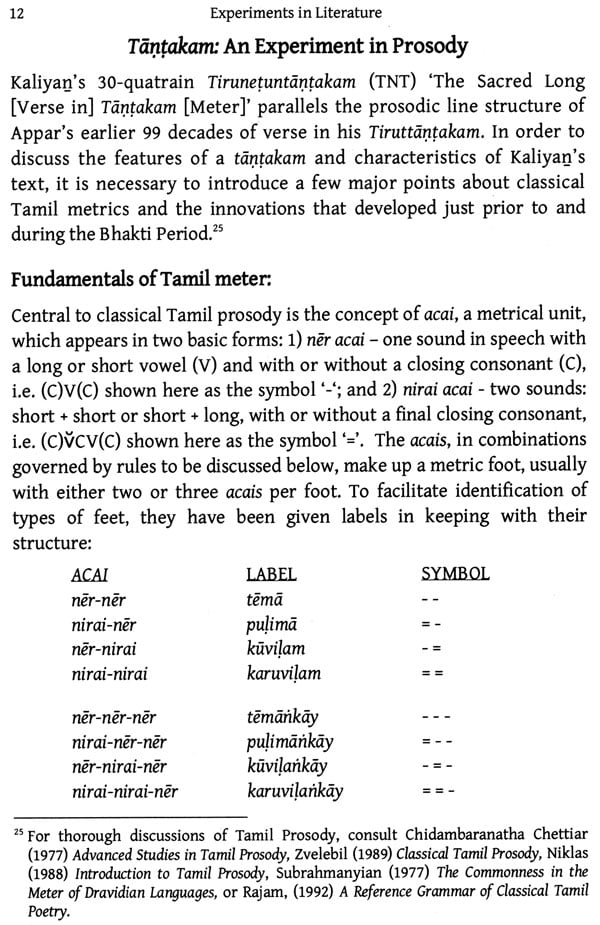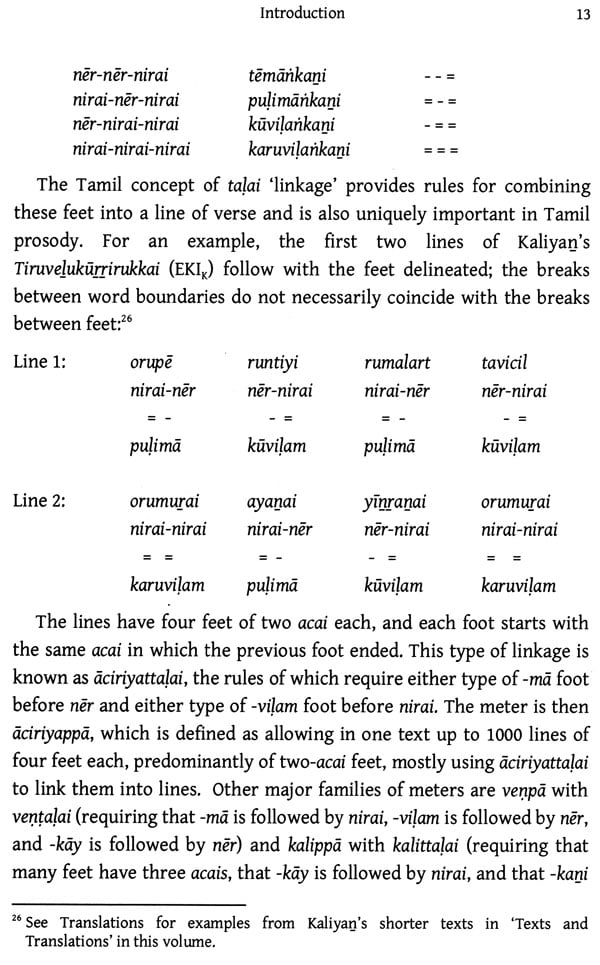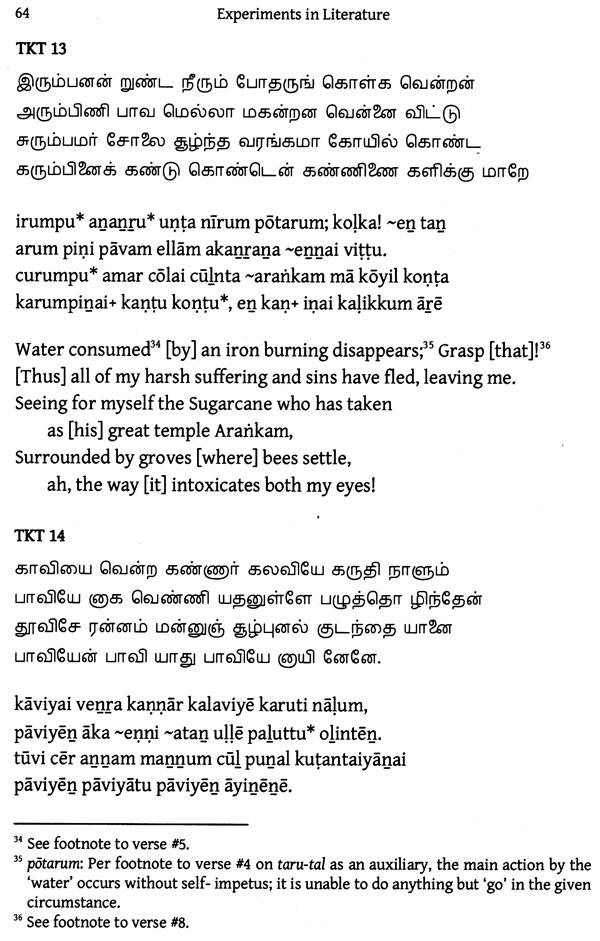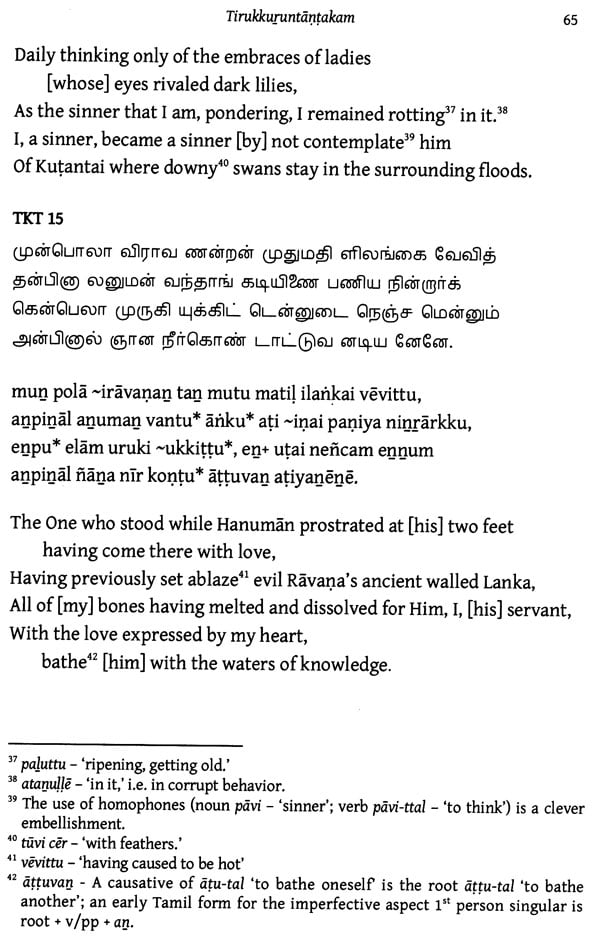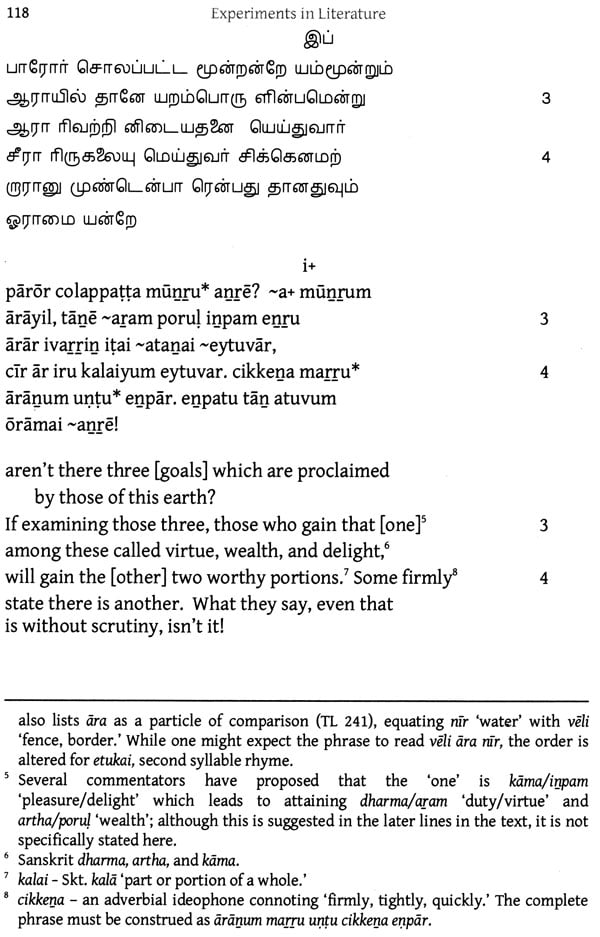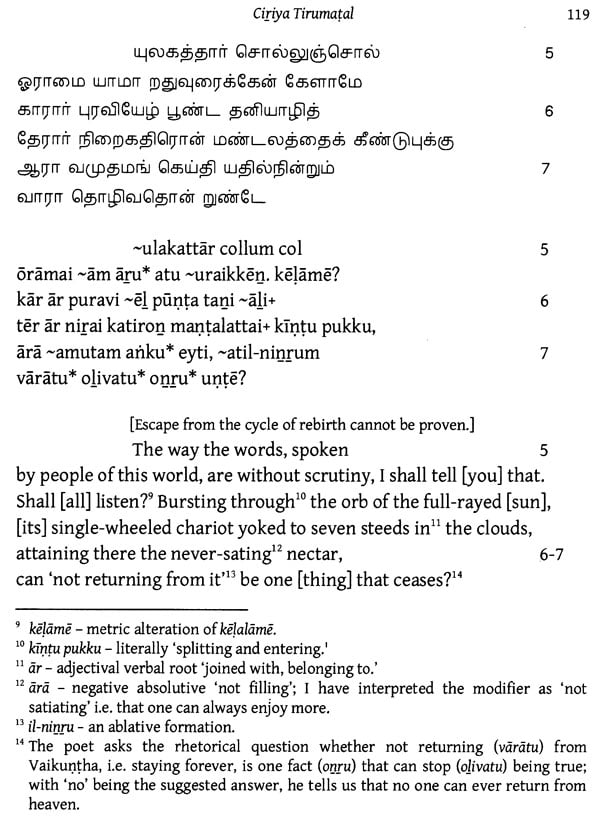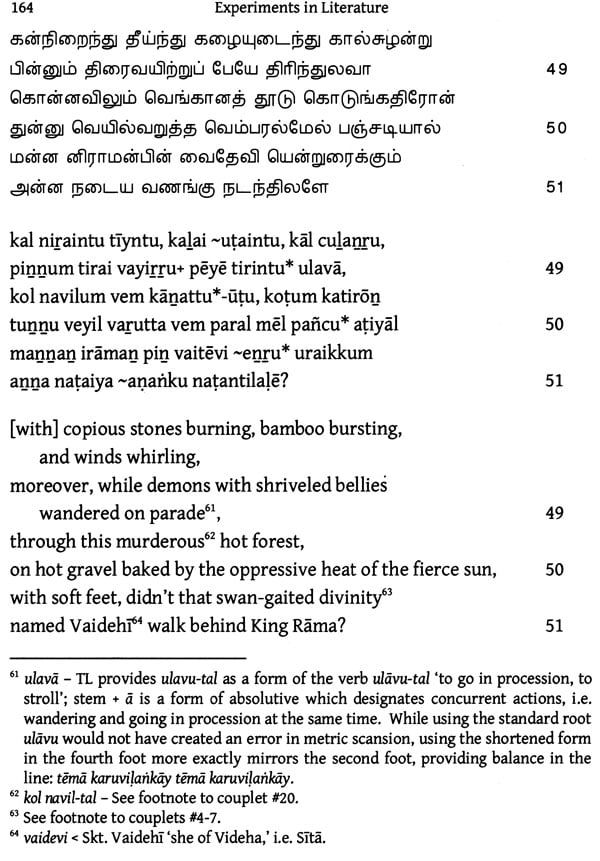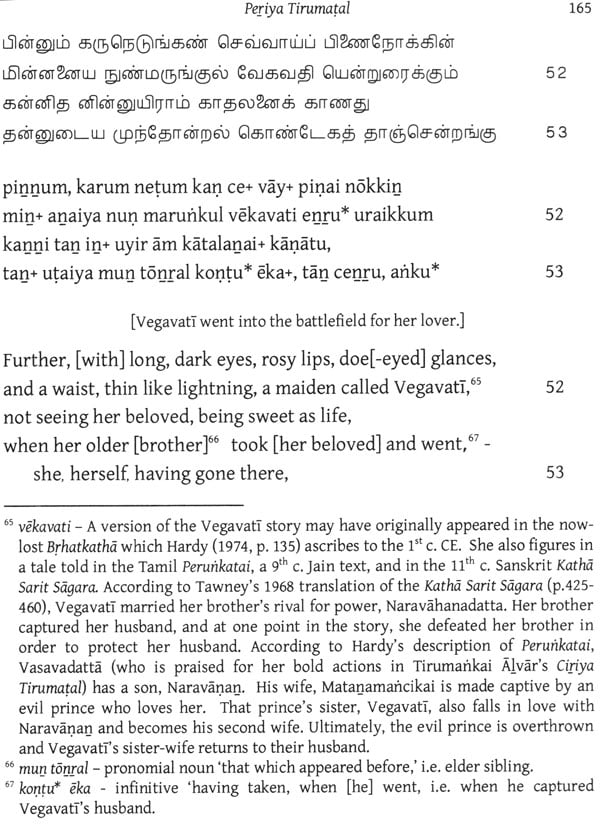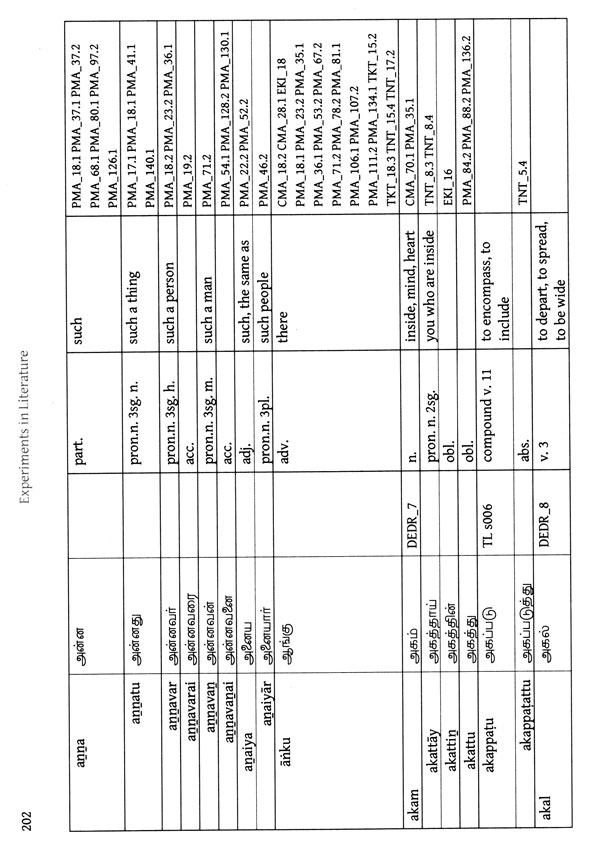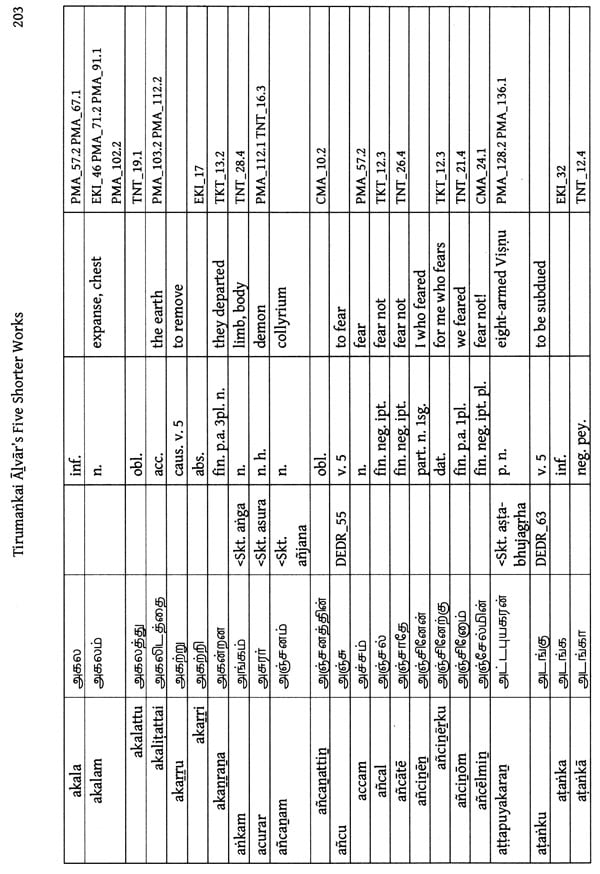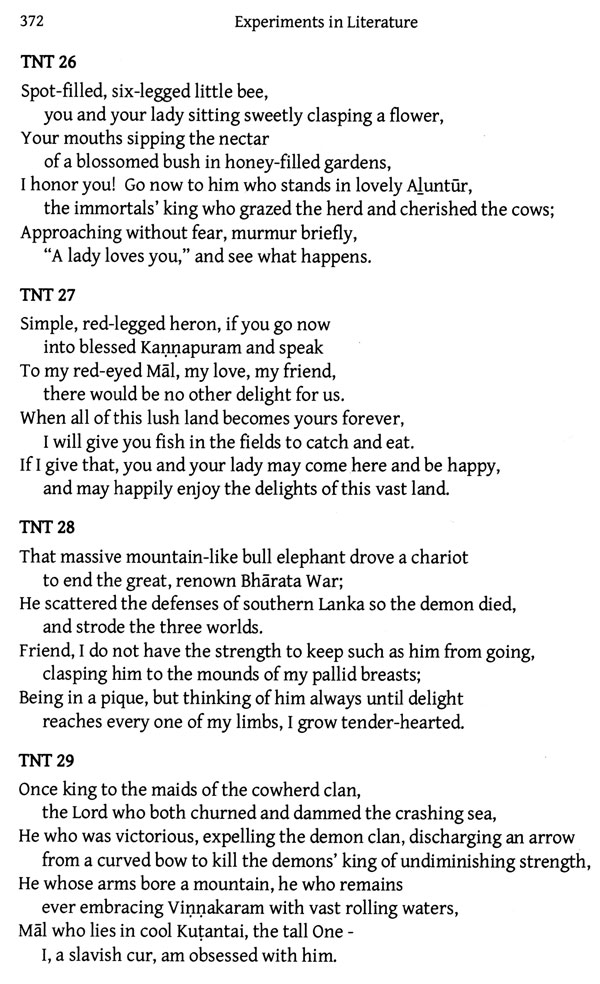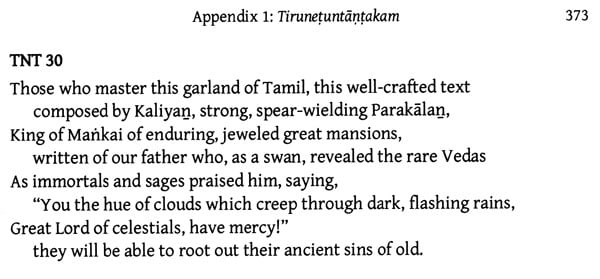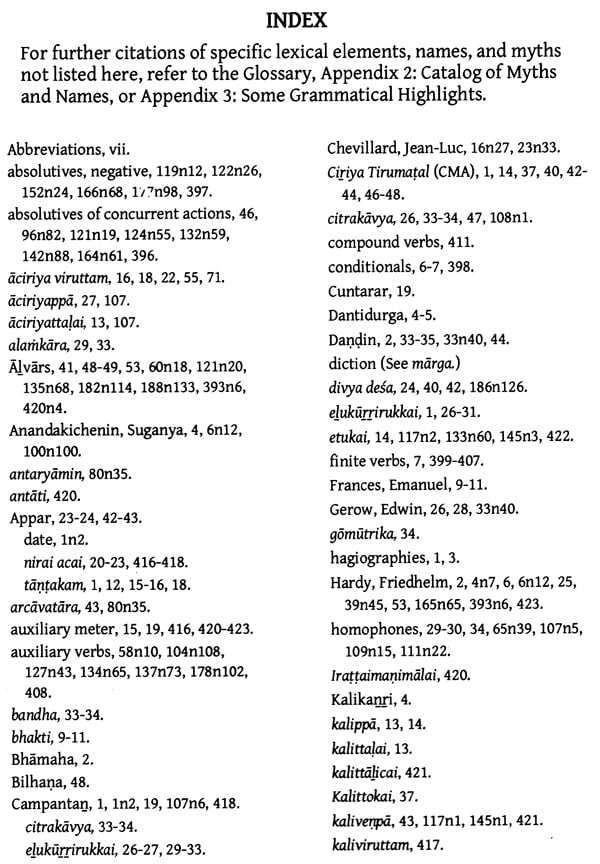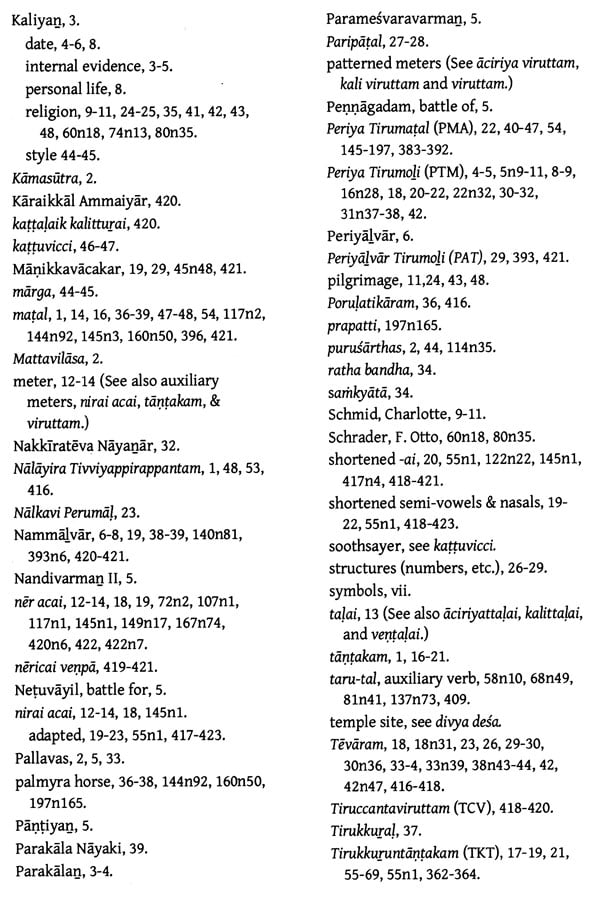
Tirumankai Alvar’s Five Shorter Works: Experiments in Literature (Annotated Translations with Glossary)
Book Specification
| Item Code: | NAR266 |
| Author: | Lynn ATE |
| Publisher: | Ecole Francaise Dextreme Orient |
| Language: | Tamil Text with English Translation |
| Edition: | 2019 |
| ISBN: | 9782855392356 |
| Pages: | 444 |
| Cover: | HARDCOVER |
| Other Details | 9.80 X 7.00 inch |
| Weight | 960 gm |
Book Description
This book is a study of the five shorter works of Tirumankai 'Alva, an eighth-century Tamil poet who had retired from a military career in South India to pursue his interest in literature. For each work, the book provides the original Tamil in metric feet, transliteration indicating word boundaries, and an English translation as true to the original Tamil as possible, with numerous notations on grammar and textual highlights. The introduction treats the poet's interest in developing his literary skills by emulating a variety of poetic devices, techniques, structures, and strategies of earlier Tamil texts. The material covers developments in Tamil prosody, a unique poetic scheme, and adaptation of several Tamil literary motifs. The book also includes an analytical glossary, as well as appendices highlighting the status of some Middle Tamil grammatical forms. The first appendix provides uninterrupted translations of the five works in an English style that attempts to approach the voice and tenor of the 'Alva, while an appendix on prosody discusses a previously undocumented adaptation of a Tamil metrical unit.
Lynn Ate is an Adjunct Faculty member in the Asia Program of Washington State University, having completed a PhD in South Asian Language and Literature at the University of Wisconsin-Madison (1978). Her previous publications include Yasoda's Songs to Her Playful Son, Krsna: Periyalvar's 9th century Tamil Tirumoli (Woodland Hills: SASA Books, 2011).
Lynn Ate est Membre Associe du programme « Asie de l’universite de l'Etat du Washington. Elle a obtenu en 1978 un doctorat en Langue et Litterature de l'Asie du Sud de l’universite du Wisconsin -Madison. Ses publications anterieures comprennent notamment l'ouvrage Yagoda's Songs to Her Playful Son, Kona: Periyalvar's 9th century Tamil Tirumoli
For many decades, India's bhakti works - the poetry of devotion found all over the subcontinent in many languages - have typically been treated as non-learned, as vernacular outpourings far distant from the learned - and often brahmin-dominated - poetic traditions, or even as rejoinders or attacks directed against them. The Tamil Vaisnava corpus, called the Nalayira Tivyappirapantam ("the Four Thousand Divine Compositions") - spanning a period from about the 6th to the 9'h centuries and containing some of the earliest poetry of this genre - is no exception. Such attitudes perhaps in part account for the production of translations (mostly into English) of variable poetic quality that all have one thing in common, namely that they are not philologically precise. The notion that such poems are vernacular voices speaking from the heart has effectively obscured the fact that these supposedly "simple songs" often represent sophisticated pieces of learned poetry, following complex conventions and bound by an intricate system of metres. Likewise, next to no attention has been paid to the peculiarities of the lexicon, the morphology and syntax of these texts, where the gradual transition from Old Tamil to Middle Tamil can be observed across the corpus. Such a tendency to indifference with respect to linguistic detail may be one reason why the contribution of the Tamil Vaisrjavas to Tamil poetics - the Malan Akapporul and the Maran Alarikaram - has gone largely uncommented by modern scholars.
Another problem to a reader hoping to read the unmediated original poems of the poet-devotees of Visnu is that they have been passed down to us through the filter of the srivaisnava school. This learned tradition, which combined the devotionalism of the Tamil poetry with Ramanuja's Sanskrit school of Visistadvaita theology, produced a vast commentarial literature in Manipravalam, reaching a peak of proliferation in the le and 15'h centuries. Modern indigenous Vaisnava scholars, most of them believers and practitioners, read the old poetic texts through the lens of that impressive tradition. But such an undertaking should not blind us to the fact that these works were conceived and understood in a period long before the theological texts, let alone the commentaries, had come into existence. Put simply, there must have been a first-millennium reading for the Prabandha works, and, with a good knowledge of the older poetic tradition and its development in the second half of the first millennium, it is possible to make a reasonably accurate reconstruction of such a reading.
This is why the Vaisnava research group that is part of NETamil has decided to engage in a retranslation project that shall, we hope, soon cover the entire corpus. These new English translations shall not be distinguished by beauty but by faithfulness to the original, by extensive annotation and by a complete analytic glossary that will eventually result in a dictionary-cum-concordance of the Tivyappirapantam. The first of these works, Suganya Anandakichenin's translation of the Peru.' Tirumoli, has already been published, along with a translation of Periyavaccan Pillars commentary. You now hold in your hands Lynn Ates first volume devoted to Tirumankai, containing the five smaller poems that can be counted as a prelude to his magnum opus, the Periya Tirumoli, and her introduction does not focus on beliefs and religious practices, but on poetics and metrics. The next in line will be a volume devoted to the three early Tiruvantati-s of Poykai-, Puta, and Peyalvar. The joy in reading such translations will probably not lie in aesthetic pleasure from relishing felicitous English, but in the effortful grasping of a literal exposition that, we hope, shows readers how to engage with, and get closer to, the beautiful language these poems were originally written in.
Much of this volume will present information of interest primarily to those concerned with the development of the language and literature of Middle Tamil, but I would also like to direct a broader audience to the unannotated translations in Appendix 1. It has been the goal of this project for the translations in the main body of the book to be useful as etudes with detailed attention given to the formal technicalities of the texts and their language, while Appendix 1 presents compositions which can be read without interruption and which, I hope, also reveal the poet's voice and the tone and flow of his works.
In completing this volume, I am first and foremost grateful to Prof. Dr. Eva Wilden (Centre for the Study of Manuscript Cultures, Universitat Hamburg) for her invitation to join the NETamil Project-Vaisnava Group. Through and from her, I have learned a great deal and have been given ongoing opportunities to study Tamil in new and illuminating ways. I also am indebted to the other members of NETamil-Vaisnava Group: Dr. Suganya Anandakichenin and Dr. Erin McCann (Research Assistants, Centre for the Study of Manuscript Cultures, Universitat Hamburg( for sharing their knowledge and devoting their energies in support of these translations. Dr. Jean-Luc Chevillard (Senior Researcher/Universite Paris Diderot) generously gave more than a little time to lively discussions of some finer points in Tamil prosody. I am sincerely grateful to Prof. Alexander M. Dubyanskiy (Institute of Asian and African Studies/Moscow State University) and Dr. Charlotte Schmid (Indology Faculty/Ecole francais d'Extreme-Orient) for their detailed reading of the manuscript and extremely helpful comments and suggestions. I thank the staff of the Chella Meenakshi Centre for Educational Research and Services, Madurai, Tamil Nadu and, in particular, its co-directors, Dr. V. A. Vidya and J. Rajasekaran, as well as Ms. Rema Raghu, Project Assistant, for their logistic support of my research stay in India in 2014-15.
Dr. L Angayarkanni, Madurai, shared her knowledge of classical Tamil prosody and her enthusiasm for South Indian literature, for which I am grateful. Lady Doak College in Madurai was also very generous in freely allocating time from the schedule of Ms. A. Kamalam, Lecturer in Tamil, for consultation.
**Contents and Sample Pages**
